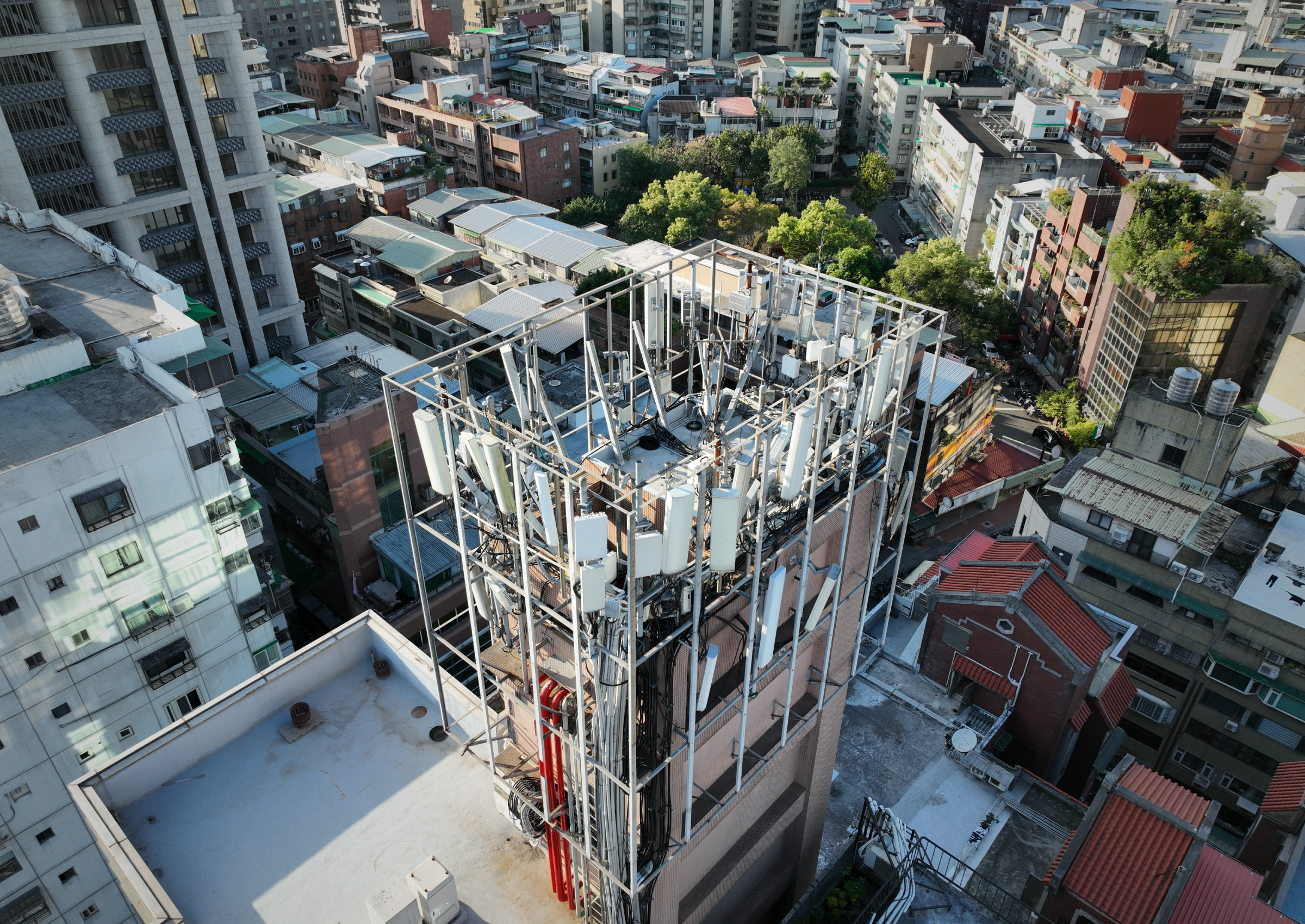Expertise
4 min reading
8 February 2024
8 February 2024
Importance of LoRaWAN Gateway Linearity over Noise Figure in Noisy Urban Areas



Imagine walking in a busy city square with lots of noise from conversations, traffic, and city life. In this situation, listening to a specific announcement on a loudspeaker is not affected by quiet voices in the background. However, it is challenging due to the loudness and various other sounds present. This mirrors the scenario faced by LoRaWAN® gateways in densely populated urban areas teeming with electronic devices and signals.
In such settings, the ambient “noise” level—comprising unwanted signals and interference—is significantly elevated, often 20-30 dB above the usual thermal noise, rendering concerns about a low Noise Figure almost moot. Under these conditions, the gateway’s proficiency isn’t just in minimizing its own noise but, more critically, in its “linearity”—its capacity to discern and accurately relay the intended LoRaWAN® signal amidst a cacophony of competing transmissions.
Therefore, in urban deployments brimming with electronic “chatter,” the emphasis shifts from merely striving for a low Noise Figure in gateways to prioritizing their linearity. The linearity of the gateway determines its ability to isolate and process the specific LoRaWAN® signals it is designed to capture. This remains true even in the presence of significant background noise. This change in focus shows why the linearity of LoRaWAN® gateways is very important in noisy environments.
Receiver Performance Metrics
In designing receivers, various performance metrics are considered to ensure optimal functionality, particularly in challenging urban environments. The following table outlines key performance metrics and their descriptions:
| Performance Metric | Description |
| Receiver Noise Figure | Quantifies the amount of noise added by the receiver to the incoming signal, crucial for distinguishing the desired signal from background noise in weak signal environments. |
| Receiver Linearity | Describes the receiver’s ability to accurately process signals without distortion, impacted by metrics such as P1dB, IIP2, IIP3, IMD2, and IMD3. |
| Inband Linearity | Ensures accurate signal processing within the desired frequency range, preventing intermodulation and maintaining signal integrity. |
| Out of Band Linearity | Manages signals outside the desired frequency range to prevent distortion of in-band signals, critical for maintaining performance in the presence of external interference. |
Understanding these performance metrics is essential for designing receivers that can effectively operate in noisy urban environments. Next, we’ll explore how these metrics influence receiver design and deployment strategies in such settings.
Receiver Noise Figure
The Noise Figure of a receiver measures the additional noise it adds to the signal it processes. This noise is on top of the existing unavoidable noise. In simpler words, it measures the extra noise added by the receiver’s electronics to the incoming signal.
In areas with weak signals, a lower Noise Figure is important. This is because it means the receiver adds less noise. As a result, it becomes easier to distinguish the desired signal from the background noise. A high Noise Figure can mask or drown out a weak signal, severely impacting the receiver’s performance by reducing the clarity and increasing the error rate of the signal received.
Receiver Linearity
In the context of designing a LoRaWAN® radio, receiver P1dB, IIP2, IIP3, IMD2, and IMD3 are critical parameters that impact the system’s ability to function effectively in a complex signal environment as provided in Figure 1.
P1dB refers to the point where the receiver becomes nonlinear by 1 dB, indicating its maximum linear amplification capability.
IIP2 (Second-Order Intercept Point) and IIP3 (Third-Order Intercept Point) are metrics for assessing a receiver’s linearity, predicting distortion levels for second and third-order intermodulation products, respectively.
IMD2 (Second-Order Intermodulation) and IMD3 (Third-Order Intermodulation) describe the unwanted signals generated by nonlinear mixing of two or more frequencies within the receiver.
High values for IIP2 and IIP3 imply better receiver linearity and less distortion, which is crucial in urban areas where signals from various sources can interfere with the desired signal, ensuring that LoRaWAN® gateways can reliably receive signals from devices even in the presence of strong nearby transmissions.
Figure 1: Parameters Impacting System Functionality in Complex Signal Environments
Inband Linearity
Inband Linearity refers to the receiver’s ability to accurately process signals within the desired frequency range without distortion. It’s essential for ensuring that the signals are reproduced as accurately as possible.
Inband Linearity affects the receiver’s performance by preventing signal mixing and the creation of additional frequencies that can disrupt signal reception. This is important for maintaining signal clarity and quality. High Inband Linearity is critical for maintaining signal integrity, allowing for clear reception and accurate interpretation of the signal without being compromised by these unwanted interactions.
Out of Band Linearity
Out of Band Linearity, in contrast to Inband Linearity, pertains to the receiver’s capability to handle signals outside the desired frequency range without causing distortion to in-band signals. This is important because strong signals outside the desired range can still affect how well the receiver works. They can create interference that disrupts the intended signal.
Out of Band Linearity is crucial for ensuring that these external signals do not degrade the receiver’s performance. It differs from Inband Linearity in its focus on managing external, undesirable signals’ impacts rather than the accuracy of processing the desired signals themselves.
Linearity in Dense Urban Deployment
In dense urban environments, where the spectrum is crowded with a multitude of signals, both Inband and Out of Band Linearity become more critical than the Noise Figure. This is because the primary challenge in such settings is not just the receiver’s internal noise, but the overwhelming presence of external, strong signals that can distort the desired signal.
A scenario illustrating this importance could involve a radio receiver located in a bustling city center, where numerous devices and transmitters are operating simultaneously. Here, the receiver’s ability to maintain signal integrity amidst these competing signals—thanks to high linearity—is more vital than its inherent noise level, as the primary concern is avoiding signal distortion rather than minimizing added noise.
Comparative Importance
In a dense urban environment characterized by high levels of signal interference, prioritizing Linearity (both Inband and Out of Band) over Noise Figure in designing a radio receiver would be more strategic. This choice is driven by the complexity and density of the signal environment, where the main challenge lies in distinguishing the desired signal amidst a sea of strong, competing signals.
When creating a receiver for emergency services in a city, prioritizing high linearity ensures clear and accurate reception of important messages. This also prevents interference from nearby electronic devices and signals. In these situations, it is most important to be able to process the intended signals without any interference. Linearity is the main thing to think about, even though having a low Noise Figure is still good.
Conclusion
In urban deployments, LoRaWAN® gateway linearity becomes significantly more important than noise figure due to the high levels of ambient electronic noise and interference from numerous sources. The linearity of a gateway determines its ability to discern and accurately process specific LoRaWAN® signals amidst this interference.
High in-band and out-of-band linearity ensure signal integrity and prevent distortion from strong external signals, which is crucial for reliable communication even when devices are nearby. Thus, focusing on gateway linearity over noise figure is strategic for effective signal reception in noisy urban environments.